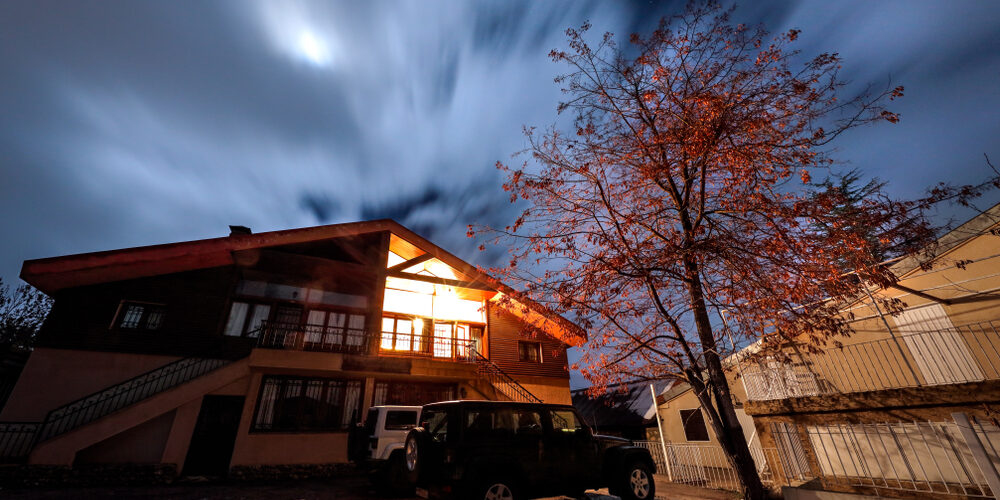One-way window film, designed to provide privacy during the day by creating a mirror effect on the exterior, typically does not offer the same level of privacy at night. This is due to the way light transitions between the inside and outside of the home.
How It Works
- Daytime – During the day, the outside of the window is brighter than the inside, which causes the film to reflect the brighter light, creating a mirror-like appearance from the outside while still allowing you to see out.
- Nighttime – At night, the scenario reverses. Interior lights make the inside of the home brighter than the outside. This diminishes the reflective effect, making the interior visible from the outside, especially if lights are on and it’s dark outside.
Nighttime Privacy Solutions
Since one-way window film loses its effectiveness at night due to interior lighting, here are a few methods to maintain privacy…
- Use Additional Coverings – Integrating curtains, blinds, or shades that can be closed at night ensures privacy.
- Install Decorative or Frosted Film – These types of films obscure the view in both directions, providing constant privacy but also blocking the view from the inside.
- External Lighting – Increasing outdoor lighting can help reduce the visibility difference, but it’s often not enough to maintain the same level of privacy as during the day.
In summary, while one-way window film is effective for daytime privacy and reducing glare and heat from the sun, it does not provide privacy at night when interior lights are on. Combining this film with other window treatments is a common approach for 24-hour privacy.






